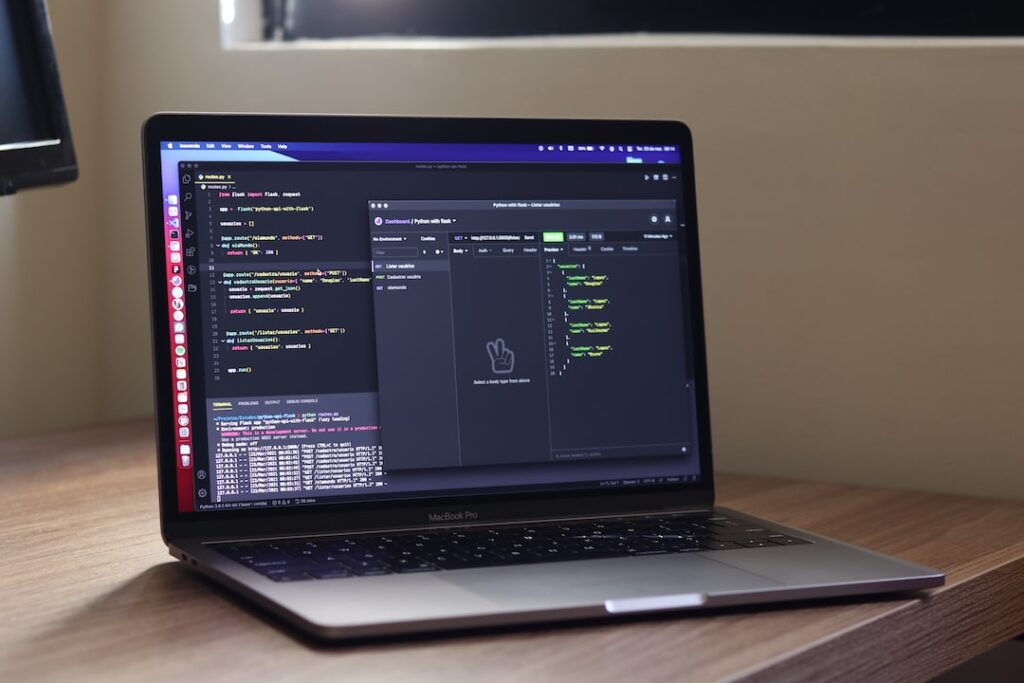
In the ever-evolving landscape of cloud infrastructure, understanding telemetry is paramount for optimizing performance and efficiency. Telemetry, the automated communication and data collection process, provides crucial insights into the health, usage, and overall operation of cloud systems. By harnessing telemetry data, organizations can make informed decisions, predict potential issues, and enhance resource allocation. This proactive approach not only improves system reliability but also drives cost savings and operational excellence. Through real-time monitoring and analysis of key metrics such as resource utilization, latency, and traffic patterns, businesses can fine-tune their cloud environments for peak performance. In this digital era, where agility and scalability are imperative, mastering telemetry empowers enterprises to adapt swiftly to changing demands and stay ahead of the competition. Let’s delve into the realm of telemetry and unlock the full potential of cloud infrastructure optimization.
Understanding Telemetry Data
Telemetry data is a fundamental aspect of cloud infrastructure management, providing valuable insights to optimize performance, reliability, and operational efficiency. It involves collecting and analyzing data from various sources within the infrastructure to offer a comprehensive view of system behavior and performance.
One key characteristic of telemetry data is its real-time nature, offering immediate feedback on the functionality of different components in the cloud environment. By monitoring crucial metrics like CPU utilization, memory consumption, network traffic patterns, and application response times, organizations can quickly detect abnormalities, troubleshoot issues, and proactively address potential disruptions, ensuring smooth operations.
Distinguishing between monitoring and telemetry is essential in cloud management. Monitoring focuses on assessing the current system state using predefined metrics and thresholds, while telemetry goes deeper by capturing and analyzing detailed data to facilitate informed decision-making. Integrating monitoring and telemetry tools provides organizations with a holistic view of their cloud infrastructure, helping to identify performance bottlenecks and maintain a superior user experience.
Telemetry data plays a crucial role in effective cost management, enhancing security measures, and unlocking automation opportunities. Through a thorough analysis of telemetry insights, organizations can discover chances for cost optimization, strengthen security protocols, and automate routine tasks to streamline operations, reducing operational risks and fostering innovation.
In summary, a profound understanding of telemetry data is vital for successful cloud management. By utilizing telemetry analytics, organizations can drive continuous improvements, refine resource allocation strategies, and offer exceptional user experiences in the dynamic cloud landscape.
To delve deeper into the importance of telemetry data, let’s explore common telemetry sources in cloud environments, specific telemetry metrics of critical importance, and best practices for leveraging telemetry data to achieve operational excellence in cloud infrastructure management.
Common Telemetry Sources
In cloud environments, common telemetry sources include: – Logs: Detailed records of system activities, errors, and warnings. – Metrics: Quantitative data on system performance (e.g., CPU usage, memory utilization). – Traces: End-to-end visibility into request paths through services. – Events: Capture of significant system occurrences.
Specific Telemetry Metrics
Key telemetry metrics include: – Response Time: Influences user experience and system efficiency. – Error Rates: Highlight potential issues requiring attention. – Throughput: Reflects system capacity and performance limits. – Saturation Levels: Indicate resource utilization and potential bottlenecks.
Best Practices
Effective telemetry data utilization involves: – Defining clear objectives for telemetry collection. – Selecting metrics aligned with business goals. – Establishing baseline performance benchmarks. – Implementing automated anomaly detection mechanisms. – Regularly reviewing and refining telemetry strategies.
AI Integration in Telemetry Analysis
AI Algorithms for Telemetry Insights
In this section, we will delve into the realm of AI algorithms tailored for telemetry insights. The utilization of AI algorithms in telemetry analysis has redefined how businesses extract value from data streams. Through advanced machine learning techniques, organizations can now gain profound insights into operational efficiency, performance metrics, and potential areas for optimization. We will explore the various types of AI algorithms commonly applied in telemetry analysis, such as anomaly detection, pattern recognition, and predictive analytics, showcasing how these technologies empower decision-makers with a deeper understanding of their telemetry data.
Enhancing Infrastructure Efficiency with AI
Unlocking the full potential of infrastructure management through AI-driven solutions has become a cornerstone of modern operations. By integrating AI technologies into infrastructure monitoring and control systems, businesses can achieve unparalleled levels of efficiency and reliability. From real-time data processing to adaptive resource allocation, AI enables infrastructure managers to proactively respond to changing demands, prevent downtime, and streamline maintenance activities. We will discuss specific case studies and examples that highlight the tangible benefits of leveraging AI for infrastructure management, emphasizing the transformative impact on operational workflows and cost savings.
AI-Driven Predictive Maintenance
The concept of predictive maintenance has undergone a paradigm shift with the integration of AI technologies. AI-driven predictive maintenance strategies leverage historical data, sensor readings, and machine learning models to anticipate equipment failures before they occur. By implementing predictive maintenance schedules based on AI insights, businesses can minimize unplanned downtime, extend the lifespan of critical assets, and optimize maintenance costs. We will explore the key components of AI-driven predictive maintenance, including data preprocessing, model training, and implementation best practices, illustrating how proactive maintenance strategies are reshaping traditional asset management approaches.
Future Trends in AI Telemetry Integration
Looking ahead, we will examine the emerging trends and future directions of AI integration in telemetry analysis. From edge computing applications to decentralized AI models, the landscape of AI-powered telemetry solutions is constantly evolving. We will discuss the implications of these trends on industry practices, regulatory frameworks, and the overall digital transformation journey. By staying abreast of the latest advancements in AI telemetry integration, businesses can position themselves as pioneers in leveraging data-driven insights for strategic decision-making and operational excellence.
Implementing Telemetry Solutions
Choosing Suitable Telemetry Tools
Implementing telemetry solutions requires a thoughtful selection of the right tools to meet the specific needs of your project. Factors such as data collection capabilities, scalability, ease of integration, and compatibility with existing systems should guide your decision-making process. Research various telemetry tools available in the market, compare their features, consider user reviews, and evaluate their support and maintenance offerings. Choosing a suitable telemetry tool is crucial for ensuring accurate data collection and effective monitoring of system performance.
Integration Best Practices
Integrating telemetry tools seamlessly into your systems is key to maximizing the value of telemetry data. To ensure smooth integration, establish clear communication channels between different components, design efficient data pipelines for data flow, maintain data consistency across platforms, and implement robust error handling mechanisms. By following integration best practices, you can minimize disruptions during the implementation phase, improve data accuracy, and enhance the overall efficiency of your monitoring infrastructure.
Overcoming Telemetry Implementation Challenges
While implementing telemetry solutions, you may encounter challenges such as data overload, monitoring complexity, and resource constraints. To address these challenges effectively, consider leveraging automation tools for data processing and analysis, implementing advanced data filtering techniques to prioritize critical information, and optimizing resource allocation for efficient telemetry operations. Collaborating with cross-functional teams, including IT, operations, and security professionals, can help address integration issues and ensure a successful deployment of telemetry solutions. By proactively identifying and mitigating challenges, you can enhance the reliability, scalability, and performance of your telemetry infrastructure.
Ensuring Data Security and Compliance
Data security and compliance are paramount in telemetry implementations to safeguard sensitive information and adhere to regulatory requirements. Implement encryption protocols to protect data transmission, establish access controls to restrict unauthorized usage, and regularly audit telemetry systems for compliance with industry standards and regulations. By prioritizing data security and compliance measures, you can build trust with stakeholders, mitigate risks of data breaches, and maintain the integrity of your telemetry operations.
Monitoring and Optimization Strategies
Continuous monitoring and optimization are essential components of successful telemetry solutions. Implement real-time monitoring tools to track system performance metrics, identify anomalies, and proactively address issues before they escalate. Use data visualization techniques to gain insights from telemetry data and make informed decisions for optimizing system performance and resource utilization. Regularly review telemetry reports, conduct performance analyses, and fine-tune monitoring configurations to adapt to changing business requirements and technological advancements. By implementing robust monitoring and optimization strategies, you can enhance the efficiency, reliability, and scalability of your telemetry solutions.
The Role of AI in Telemetry Optimization
The use of Artificial Intelligence (AI) has become increasingly prevalent in various industries. One such area where AI is making a significant impact is in telemetry optimization. Telemetry, the automated communications process by which measurements and other data are collected at remote points and transmitted to receiving equipment for monitoring, plays a crucial role in many sectors, including healthcare, manufacturing, transportation, and more. This blog section delves into the key ways AI is transforming telemetry optimization.
AI-Enabled Real-Time Monitoring
AI technology is revolutionizing telemetry optimization by enabling real-time monitoring of data streams. Through AI algorithms, organizations can now analyze incoming telemetry data instantaneously, allowing for quick decision-making and proactive responses. Real-time monitoring powered by AI not only enhances operational efficiency but also helps in identifying trends and patterns that would have otherwise gone unnoticed. This capability is particularly valuable in scenarios where immediate action is required to prevent potential issues or failures.
Predictive Analysis with AI
Another crucial role that AI plays in telemetry optimization is in predictive analysis. By leveraging machine learning and predictive analytics, AI can forecast future trends and behaviors based on historical telemetry data. This enables organizations to anticipate potential problems before they occur, thereby reducing downtime, optimizing resource allocation, and improving overall performance. Predictive analysis powered by AI empowers businesses to make informed decisions and implement preventive measures, ultimately leading to enhanced productivity and cost savings.
AI-Based Anomaly Detection
Anomaly detection is a vital aspect of telemetry optimization, as it helps in identifying unusual patterns or outliers in the data that may indicate underlying issues or anomalies. AI-based anomaly detection systems utilize advanced algorithms to automatically detect deviations from normal behavior, flagging potential problems for further investigation. By incorporating AI into anomaly detection processes, organizations can enhance the accuracy and speed of identifying anomalies, thereby streamlining troubleshooting and maintenance activities.
The integration of AI into telemetry optimization brings about a myriad of benefits, ranging from real-time monitoring and predictive analysis to anomaly detection. By harnessing the power of AI, businesses can unlock new opportunities for optimization, efficiency, and performance improvement in their telemetry systems.
Enhancing Cloud Infrastructure with Telemetry
Cloud infrastructure plays a crucial role in supporting business operations and facilitating innovation. One key aspect that organizations can utilize to maximize the benefits of their cloud environments is telemetry. Telemetry data, which involves the collection and analysis of real-time information on system performance, can be a game-changer in enhancing scalability, optimizing performance, and ensuring security.
By integrating telemetry with monitoring tools, organizations can develop a comprehensive view of their cloud infrastructure. This holistic approach allows for a deeper understanding of how different components interact within the cloud environment, enabling more informed decision-making.
Telemetry data provides valuable insights that can be used to fine-tune cloud deployments, manage costs effectively, and enhance the overall reliability and security of the infrastructure. Furthermore, by leveraging telemetry, organizations can identify opportunities for automation, streamline processes, and drive efficiency and agility within their cloud operations.
When telemetry and monitoring are combined, organizations can proactively manage their cloud infrastructures. This proactive approach enables teams to address potential issues before they escalate, thereby ensuring optimal performance and user satisfaction.
Where cloud computing has become the backbone of modern businesses, the strategic utilization of telemetry data is paramount for organizations striving to maintain a competitive edge. Telemetry, as the proactive collection and analysis of real-time performance data, empowers businesses to not only react but predict and prevent potential issues within their cloud environments.
Beyond the immediate benefits of scalability, performance optimization, and security enhancement, telemetry serves as a catalyst for continuous improvement and innovation. By harnessing the power of telemetry insights, organizations can drive strategic decision-making, identify trends, and forecast future needs, thereby aligning their cloud infrastructure with evolving business requirements.
Moreover, the integration of telemetry with advanced analytics tools opens up avenues for predictive maintenance, anomaly detection, and resource optimization, further streamlining operational efficiencies and cost-effectiveness. This data-driven approach enables organizations to stay ahead of the curve in a landscape where agility and responsiveness are key competitive advantages.
The synergy between telemetry and cloud infrastructure not only ensures operational excellence but also paves the way for transformative growth and sustainable success in an increasingly digital-centric world.
Future Prospects of Telemetry and AI Integration
In recent years, the integration of telemetry and artificial intelligence (AI) has shown immense potential and sparked significant interest across various industries. This blog section explores the future prospects of this integration, focusing on AI-driven innovations in telemetry, telemetry’s role in AI-ML operations, and predictions for telemetry trends.
AI-Driven Innovations in Telemetry
The marriage of AI with telemetry systems has unlocked a realm of possibilities for enhancing data collection, analysis, and decision-making processes. AI algorithms can now interpret telemetry data in real-time, enabling proactive responses to potential issues and predictive maintenance strategies. From anomaly detection to pattern recognition, AI-driven innovations are revolutionizing how telemetry data is leveraged. With the advancement of machine learning algorithms, telemetry systems can now not only detect anomalies but also predict potential failures, optimizing maintenance schedules and reducing downtime.
Telemetry’s Role in AI-ML Operations
Telemetry plays a crucial role in facilitating the training and optimization of AI and machine learning (ML) models. By providing continuous streams of data from various sources, telemetry enables AI systems to learn, adapt, and improve their performance over time. The integration of telemetry data into AI-ML operations enhances the accuracy and efficiency of models, leading to more reliable outcomes and insights. Moreover, telemetry data provides valuable insights into user behavior, system performance, and environmental conditions, allowing AI models to make more informed decisions and predictions.
Predictions for Telemetry Trends
Looking ahead, the future of telemetry and AI integration seems promising, with several trends poised to shape the landscape. These include the rise of edge computing for real-time telemetry processing, the growth of AI-powered predictive analytics for proactive decision-making, and the increased adoption of telemetry solutions across diverse sectors. As organizations continue to harness the power of AI-driven telemetry, we can expect to see a convergence of cutting-edge technologies that drive innovation and create new possibilities in data-driven operations. The integration of AI and telemetry is likely to lead to more autonomous systems capable of self-optimization and decision-making, revolutionizing industries such as healthcare, transportation, and manufacturing with unprecedented efficiency and accuracy.
Conclusion
Understanding telemetry is essential for optimizing cloud infrastructure efficiently. By collecting and analyzing real-time data from various components within the cloud environment, organizations can make informed decisions to improve performance, enhance security, and reduce costs. Embracing telemetry not only enables proactive monitoring and troubleshooting but also empowers teams to scale resources effectively and meet the dynamic demands of modern cloud-based applications. As cloud technology continues to evolve, leveraging telemetry will be crucial for staying competitive and maximizing the benefits of cloud infrastructure.







